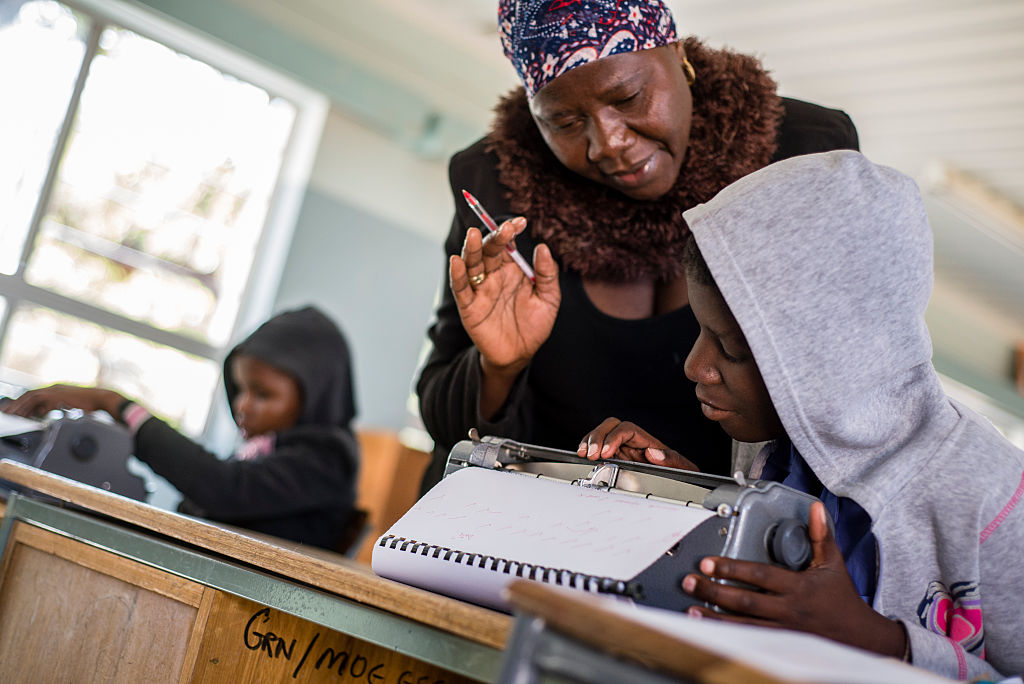
Theirworld’s approach to inclusion and education
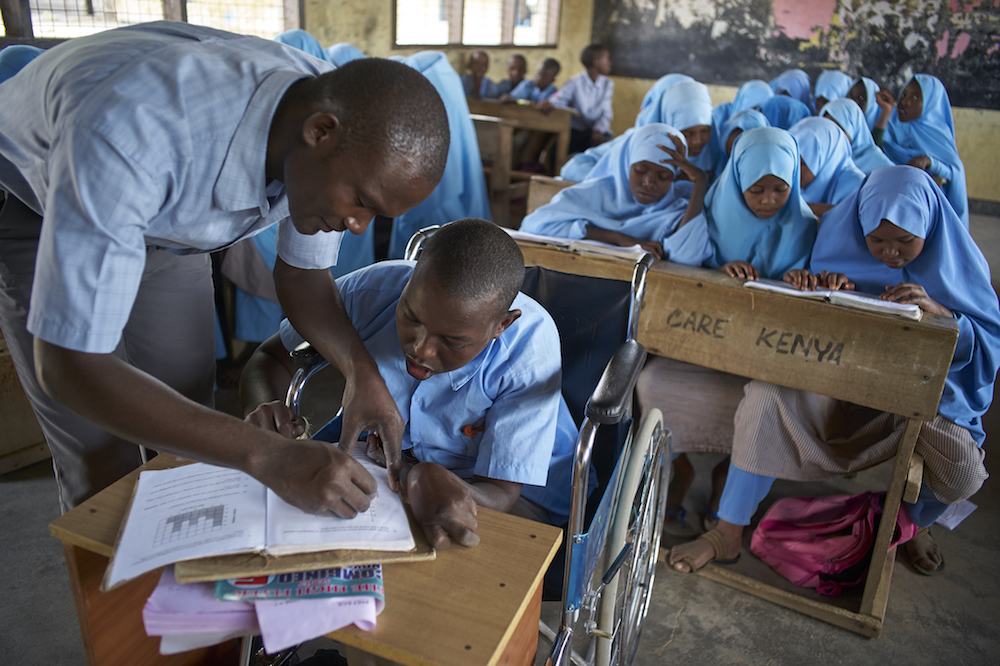
Children with disabilities, Early childhood development, Right to education
Our disability and inclusion consultant welcomes the focus of this year's Global Education Monitoring report on inclusion - but says there is much more to be done.
In my career working on promoting the voices of children with disabilities, I have specifically focused on their inclusion in education.
This year’s Global Education Monitoring (GEM) Report, released this week, focuses on that very theme, a positive sign that inclusion or education for all is finally getting some attention and is becoming a priority in the education world.
The report highlights the harsh realities of our time, showing that a student’s gender, skin colour, ethnicity, sexual orientation, mother tongue, religion, immigration status, or parents’ income are still widespread causes of discrimination.
In 2020, a quarter of a billion children and youth continue to be out of school and many learners will leave school early. There are four countries that ban pregnant girls from school, 117 countries that allow child marriage and 20 countries that have not ratified the Minimum Age Conventions that prevent child labour.
In the backdrop of these realities, it cannot be over-emphasised that the 2020 GEM Report is a reminder that much remains to be done to achieve inclusion in education by 2030. When the dream for inclusive education was first envisaged, it was hoped that all children would have equal access to education without any segregation.
Although the United Nations Sustainable Development Goal 4 intended to ensure inclusive and equitable quality education and promote lifelong learning opportunities for all by 2030, the Education for All movement had since long established that same ambition of free and compulsory education for every child.
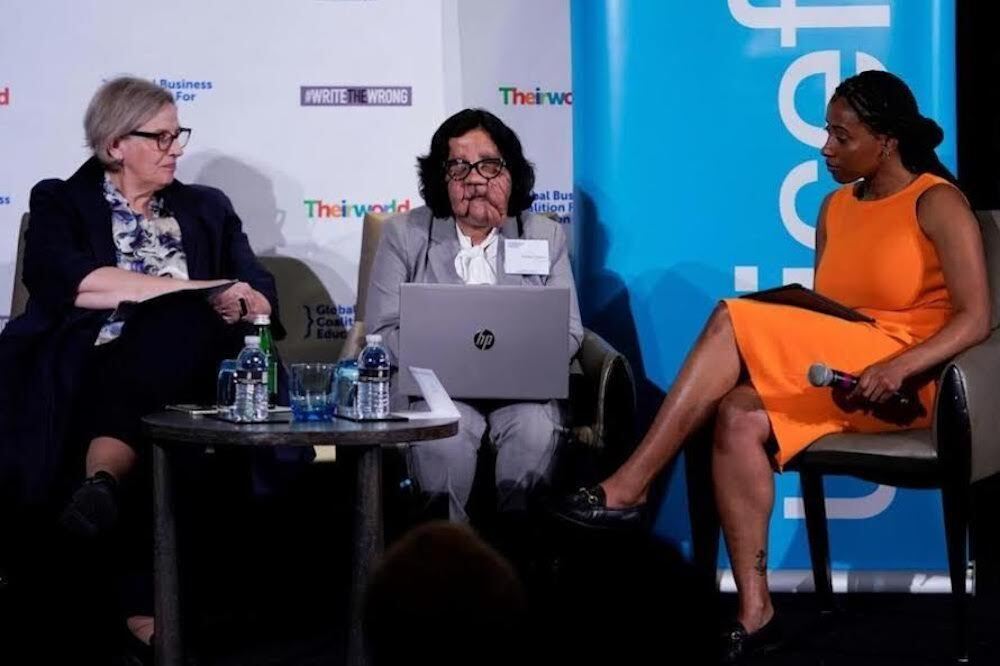
Vibhu Sharma at a forum in Washington, with (right) Jamira Burley, Head of Youth Engagement and Skills at the Global Business Coalition for Education (Theirworld)
However, while these ambitious mandates on education seek to strengthen universal education, statistics like the latest set of data from the GEM Report suggest a different narrative.
Of the 260 million children who do not receive any schooling, there are 175 million shut out of early childhood education. More than half of the world’s refugee children do not receive any education at all. Within developing countries, 40% and 55% of children with disabilities are out of primary and secondary education respectively.
These numbers show that people’s identity, background and ability continue to dictate their education and that there clearly is a gap between ambitious policy goals and turning those into concrete achievements. The promise of education for all is at great risk of remaining unfulfilled when so many of the world’s children are left behind.
The impact of Covid-19 on education might provide even fewer prospects for out-of-school children to go back to school and actually push many to drop to support their families if they face financial difficulties.
Access to education has been further jeopardised for some of the world’s marginalised children as schools moved to distance learning at a time when many do not have access to the digital hardware, software and internet access that they require to access classes online.
Many children, such as those with disabilities, had already faced additional challenges such as schools and teachers using un-adapted digital platforms.
We must build bridges and not walls so that every child can benefit from access to schools.
It is therefore of utmost importance that we pause to reflect on what must be done, and how can we, as a global community, come together to not only emphasise the need for cooperation between governments, civil society and the business sector to help deliver inclusive education services, but also to take action and strengthen ourselves.
At Theirworld, we recognise that barriers to education interact in multiple ways – and that if the promise of inclusive education is to be achieved, there can be no hesitation or equivocation in investing in effective and inclusive education initiatives.
Theirworld’s Safe School Initiative endeavoured to deliver safe, non-violent, inclusive and effective places of learning. This was done with the objective of ensuring that children were in environments that they could safely learn and play, and realise their full potential, especially during and after conflicts and emergencies.
From its onset in Nigeria, the Safe Schools Initiative extended to Turkey, Pakistan and Latin America. It has helped place children in safer geographical locations, provided teaching and educational materials for displaced children in camps, increased the number of teachers, volunteers and classes to accommodate Syrian refugees in Turkey and trained teachers to better support refugee children.
It has expanded the number of community and school-based interventions for children at risk, and promoted non-violence in schools and the right of all children and adolescents to receive a quality education.
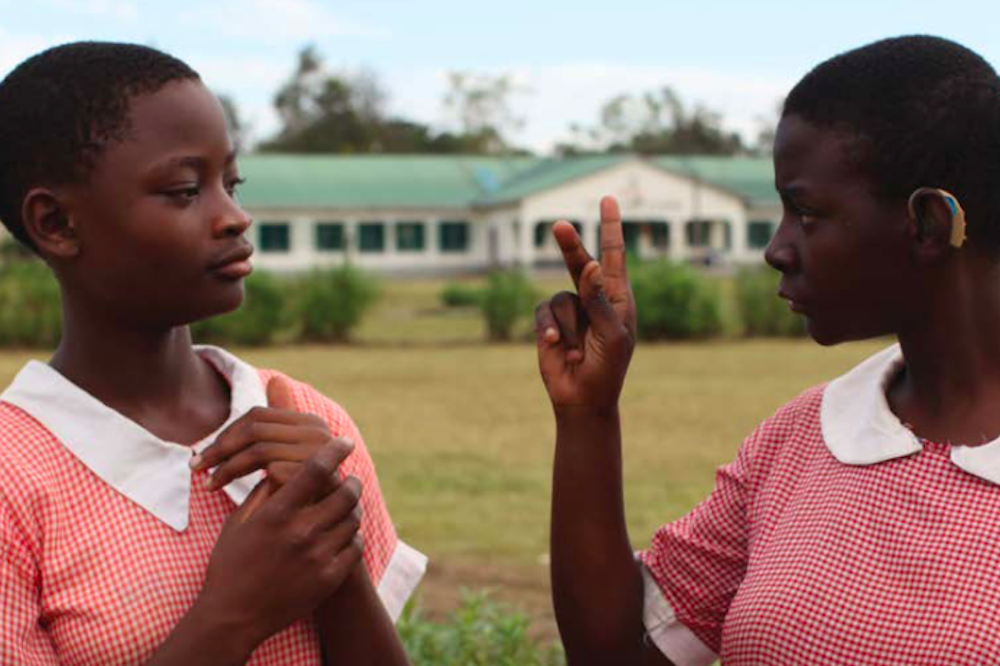
Girls with intellectual and physical disabilities continue to be marginalised (UNGEI)
Every child deserves the best start in life, which includes a healthy birth and quality and inclusive early childhood education. Theirworld’s Global Early Childhood Education Initiative focuses on advocacy and prioritisation of investment in early childhood education by ensuring that some of the most marginalised children, such as those with disabilities, those who have been impacted by a crisis or HIV-Aids, have access to early childhood education.
Teachers are assisted to provide adequate support for all learners by implementing inclusive teaching methods for those with special or additional learning needs in preparatory early childhood education classes.
In order to achieve literacy and universal education, we must build bridges and not walls so that every child can benefit from access to schools. Theirworld’s Refugees and Vulnerable Children in Lebanon and Education for Refugees in Turkey programmes show how the organisation supports a humanitarian-first response for education by stressing that policies and funding are appropriately invested to ensure every refugee child has access to education.
Through a partnership between the Ministry of Education and Higher Education, United Nations agencies, national and international NGOs and the private sector, the organisation campaigned for a “double-shift school” system for Syrian refugees in Lebanon and supports the continued delivery of the system.
The use of assistive technology has significantly opened doors to schools and has made classrooms more inclusive for children with disabilities.
At the same time, the organisation identifies cost-effective interventions to support refugee children overcome the economic, cultural and linguistic barriers that keep them out of school.
It is evident that educated girls contribute to a better world. Theirworld’s Skills for the Future and Code Clubs programme centres on preparing girls with skills for the future.
The programme aims to empower girls and young women by providing them with key skills of the next generation – digital, coding and entrepreneurship. The courses help them build confidence, self-reliance and employability.
Around the world, children with disabilities regularly face discrimination which prevents them from going to school. The 2011 World Report on Disability found that globally there were over 100 million children living with a disability.
The idea of inclusivity in the classroom of course means that all children with disabilities are accepted and can participate alongside their peers. Yet achieving this can present a significant challenge for schools and teachers as they try to adapt to different learning needs. The use of assistive technology has significantly opened doors to schools and has made classrooms more inclusive for children with disabilities.
However, not everyone has equally benefited. While schools in rich countries, or well-to-do families, can afford to buy expensive assistive technology for children with disabilities, children from poor socio-economic backgrounds lag behind as they are unable to afford the assistive technology they require to continue in education.
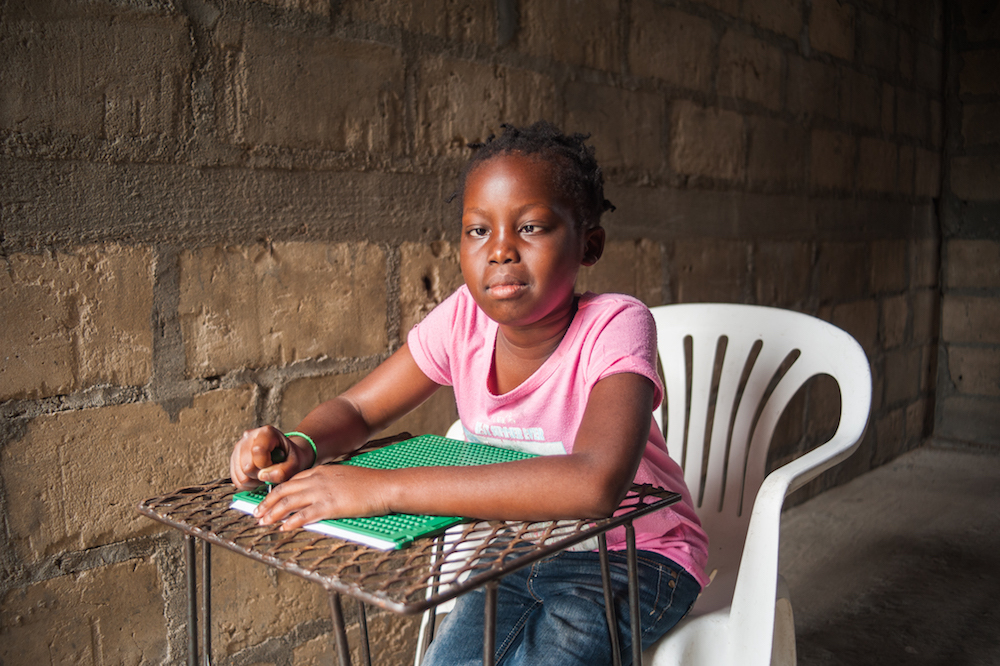
Muzna learned Braille in just one year and hopes to attend a public school in Mozambique (UN Photo)
Theirworld’s pilot project, Disabilities and technology: Expanding Inclusive Education, aims to identify the most effective assistive technology for children with hearing, visual and learning disabilities.
The programme intends to build on the investigation of how certain technologies have proven to be effective in certain learning environments.
By identifying some of the best practices in inclusive education systems, this pilot project would make recommendations to scale up effective assistive technologies in order to reach children from poorer backgrounds.
Through the Global Business Coalition for Education (GBC-Education), Theirworld is also identifying ways for businesses to support education for all by developing progressive policies, funding programmes and providing a pathway from education to work for students.
GBC-Education has also worked with companies during the COVID-19 pandemic to limit the impact of distance learning on children from marginalised communities by helping distribute computers, print materials and improve internet connections.
“All means all” – and Theirworld’s efforts to strengthen inclusion in education for refugees, girls and children with disabilities, are important steps towards achieving the dream of inclusive, equitable and quality education by 2030.
More news

